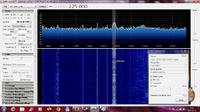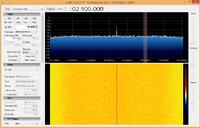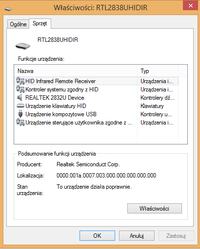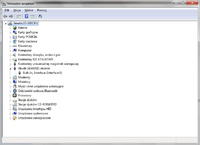bogi wrote:
The better sensitivity is due to the higher signal level from the generator on the mixer. The internal circuit (leg 8) with quartz works as a generator, but the external generator connected to it makes it a repeater (an amplifier with a low gain). Hence the greater signal on the mixer. If you would make a separate quartz generator, e.g. on one transistor, and connect it to the system, you would also notice better sensitivity.
I would like to clarify the answer of my friend "gods". The sensitivity does not depend on the generator.
I built some converters on TA7358AP (LA1185) and noticed the following relationship.
At the beginning I had one converter with a 50 MHz quartz generator and another with a 40 MHz quartz resonator. There was more sensitivity on the one with the generator, as I wrote. Only then did I not know what it depends on.
After several days of testing with various generators and quartz resonators, I came to the following conclusions:
The frequency of the generator was 10 MHz higher than the frequency of the quartz resonator, so it was therefore more sensitive
But it is not greater because there is a generator in the circuit, only the sensitivity depends on the frequency of the used resonator or quartz generator. It does not matter much for the sensitivity whether the converter circuit uses a generator or a resonator only its frequency. The lower the frequency of the resonator or generator (of the same frequency), the lower the sensitivity, and the higher the frequency of the generator or quartz resonator, the greater the sensitivity.
I tested resonators and generators at frequencies from 25 MHz - to 50 MHz - for 25 MHz the sensitivity is very low, the converter only picks up very strong stations.
for 40 MHz it is much higher, for 50 MHz it is even higher (as shown in the attached screenshots).
The best results were obtained for the frequency of 40 MHz (optimal ratio of sensitivity and gain) and when there was a quartz resonator in the converter circuit.
At 50 MHz, the sensitivity is higher, but also the interference is greater. I was not able to buy a quartz resonator with two terminals and used it with three, and therefore the SDR Sharp in Shift has -50 038 500, because it has two more capacitors connected to the center terminal in a common housing with quartz.
Updated on April 20, 2014
I bought 50 MHz SMD quartz resonators and for TA7358 for Shift 50 MHz it was necessary to connect a 20-40pF variable capacitor in series with the resonator to adjust (may not be needed, but it depends on the specific IC and manufacturer).
Generator 40 MHz PR I 225 kHz RF Gain 0 dB
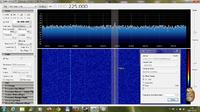
Generator 40 MHz PR I 225 kHz RF Gain 28 dB
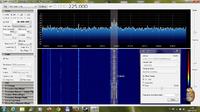
Resonator 40 MHz PR I 225 kHz RF Gain 0 dB

Resonator 40 MHz PR I 225 kHz RF Gain 28 dB
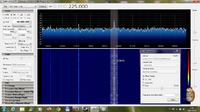
Generator 50 MHz PR I 225 kHz RF Gain 0 dB

Generator 50 MHz PR I 225 kHz RF Gain 28 dB
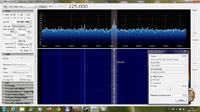
50 MHz PR I 225 kHz resonator RF Gain 0 dB

Rezonator 50 MHz PR I 225 kHz RF Gain 28 dB
